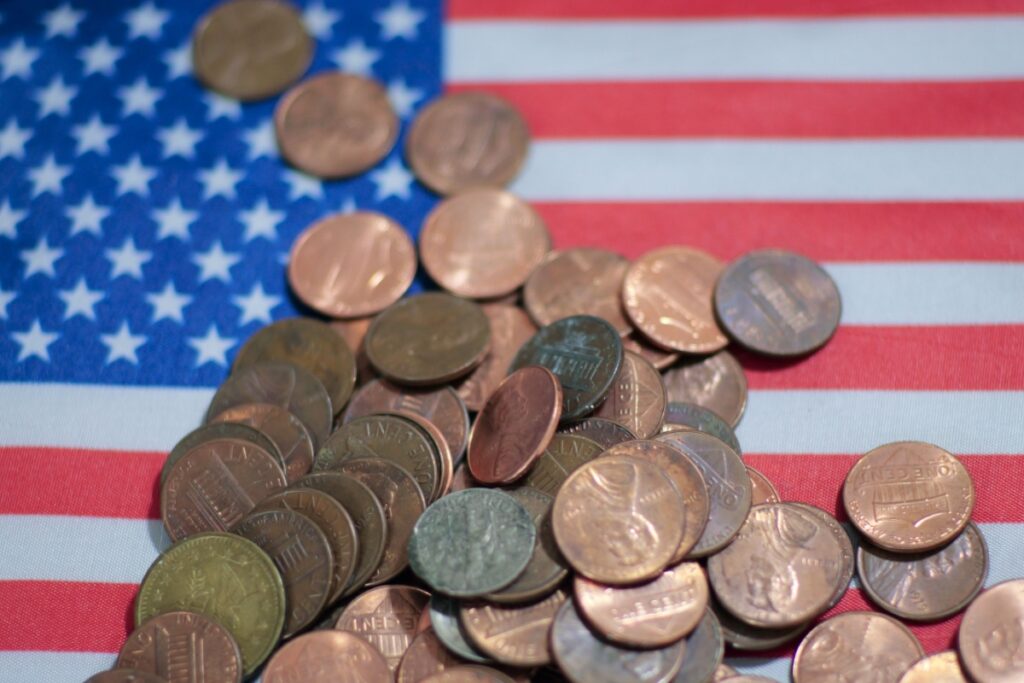The United States is confronting an expected shortage of the 1-cent coin only a few months after President Donald Trump directed the U.S. Mint to halt production, arguing that a coin that costs almost 4 cents to manufacture “no longer makes sense” for taxpayers. After the Mint shipped its final order of penny blanks in June 2025, officials expected the more than 114 billion pennies already in circulation to keep moving through banks, retailers and coin-sorting machines.
Penny Supply Dries Up After Mint Shutdown
Federal Reserve coin centers in several regions report their stocks have thinned far faster than forecast, largely because Americans continue to stash pennies in jars, drawers and car consoles instead of returning them to the system. Merchants from Pennsylvania to Texas now say they frequently cannot give exact change and are asking customers to pay electronically or provide their own coins. Banks that once placed free rolls in branch lobbies are rationing them for business clients and say they do not know when new supplies will arrive. The squeeze is the clearest sign yet that the administration’s decision to end production is rippling through day-to-day commerce.
Stores And Banks Turn To Rounding And Incentives
Because the shortage arrived before national rules on cash-price rounding were in place, companies are improvising. Many large retailers are rounding down cash totals to the nearest 5 cents to avoid accusations of overcharging in states with strict consumer-protection laws. The mid-Atlantic chain Sheetz even offered a free drink to anyone who carried in 100 pennies, a move that showed how little of the country’s coin stockpile actually re-enters circulation.
Regional grocers, pharmacies and fast-food outlets have posted signs at checkout asking customers to bring coins from home or to use debit and credit cards whenever possible. At the same time, commercial banks are limiting the number of penny rolls they will release each week, and some community banks have stopped refilling automatic coin dispensers altogether. Dylan Jeon, policy chief at the National Retail Federation, said members do not want to reverse the decision to drop the penny, but they “need clear rules so every store does the same thing,” warning that shops that round up could face class-action lawsuits.
Washington Seeks Rules To Manage Transition
Officials at the Treasury Department and the U.S. Mint say ending penny production will ultimately save about $56 million a year and free up minting capacity for higher-value coins. They note that the Mint has lost money on every new penny since at least 2006, when metal, labor and distribution costs climbed above the coin’s face value. But they also concede the administration moved faster than Congress, leaving retailers and banks in a temporary gray zone.
Lawmakers in both parties have revived the Common Cents Act and the Make Sense Not Cents Act, which would authorize cash transactions to be rounded to the nearest nickel, require that rounding favor consumers when possible, and let the Mint keep striking Lincoln cents for collectors so long as sales cover costs. Until such legislation passes, Treasury guidance is only advisory, urging businesses to round down and to post visible notices for customers. Several states, including New York, California and Ohio, are drafting parallel sales-tax rules so that invoices calculated to the penny do not clash with rounded cash payments.
A Long Debate Over A Costly Coin
The current scramble is the latest phase in a policy fight that has simmered for nearly two decades among economists, consumer groups and former Mint directors. They have long argued that the penny’s purchasing power has been eroded by inflation to the point that it buys virtually nothing, while its production drains resources that could be used elsewhere. Countries such as Canada, Australia and New Zealand eliminated their lowest-value coins gradually and paired the change with clear national rounding rules.
By contrast, the U.S. move followed a high-profile presidential directive and is unfolding on a tighter timetable, partly because Trump cast the coin as an emblem of federal “waste.” Opponents, including Americans for Common Cents, warn that scrapping the penny could raise demand for the nickel, which also costs more than its face value to produce, and that careless rounding could hit cash-paying, lower-income households hardest. For now, retailers say they are not seeking to bring the penny back, only for Washington to spell out, in binding rules, how to operate without it.



